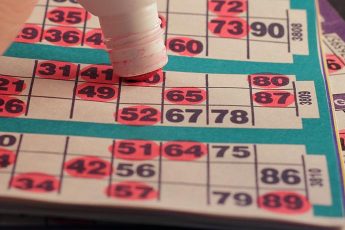What is bingo?
Bingo is a game of chance that involves you marking off numbers on your bingo card as they’re called out. Each card has a random selection of numbers on it. Players win either by completing a line, completing multiple lines or getting a full house (where every number on the card is marked off). Many bingo halls use electronic machines to randomly generate numbers, though before these became commonplace, bingo cages were used. The caller would place all the numbered balls inside a cage and turn the handle; a ball would then drop out of the bottom and its number would be called. For online bingo, the numbers are randomly decided by computer.
75-ball bingo
The two most common types of bingo you’ll find online are 75-ball bingo and 90-ball bingo. As their names suggest, what sets these two variants apart is the total number of balls that each of them has in play. In 75-ball bingo, players have a 5×5 grid with the central square left empty, for a total of 24 numbers to mark off. Each column is headed by one of the five letters of the word ‘bingo’ and each number can only appear in a certain column, as shown below.
- B1-15
- I16-30
- N31-45
- G46-60
- O61-75
With 75-ball bingo, there are numerous ways of winning. Get a blackout or full house (mark off all 24 numbers) and you’ll win the biggest prize. Other prizes are typically available for marking off all numbers in a vertical, horizontal or diagonal line and for getting two, three or four lines. Some games even have you mark numbers in certain positions on your card to complete a pattern.
90-ball bingo
The other main version of online bingo you’ll come across is 90-ball bingo. This is the most common of the two main bingo variants. The card is a 3×9 grid with a total of 15 numbers. There are five in each of the three rows, with the 12 remaining spaces left blank. The first player to mark a full row wins the first prize; the second prize goes to whoever marks off all the numbers in two rows and the third prize goes to whoever first marks off all numbers on their card. In each column, only a certain range of numbers can appear; for example the first column is for numbers 1-9, the second for 10-19, the third for 20-29 and so on.
